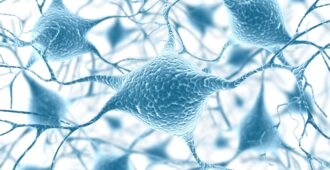Delegates to last weekend’s ENCALS (European Network for the Cure of ALS) meeting in Dublin were met with uncharacteristic hot and sunny weather – enjoyed by the numerous Stag and Hen parties wandering the city centre, but not by the 200 people ensconced in the impressive, new Biomedical Sciences Institute at Trinity College, from 8am to 7pm, for a packed programme of presentations and debate.
ENCALS was established to help develop the standards of clinical and biomedical MND research across Europe and create a more collaborative environment for researchers, industry, funding agencies and Patient Associations. However, the meeting had a very transatlantic flavour, thanks to the participation of several of the leading researchers from North America.
With around 40 speakers, as well as numerous poster presentations, there is too much to cover in a few hundred words, so I’ll focus on just a few of the key themes that were covered. I also apologise for the quite technical language, which may make for hard reading, but is a positive in that it reflects the increasing complexity and sophistication of MND research.
Can we block the ‘molecular funnel’?
The opening speaker, Prof Teepu Siddique, from Northwestern University in Chicago, spoke on The molecular funnel of neurodegeneration. His view of MND is that it may have a large number of different causes, but the way a motor neurone dies will probably be similar, no matter what the original cause. We’re currently finding lots of new genetic factors involved in the disease, but we don’t understand how many of these genes work in health, much less how they malfunction in disease. So, the mouth of our funnel is getting wider.
Prof Siddique’s view is that by focusing on the cellular changes that are common to all forms of the disease, it gives us possible therapeutic targets that could be relevant to all forms of MND. It’s easier to block the funnel at its narrowest point.
He discussed how the degradation of incorrectly formed or damaged proteins is a classic hallmark of all forms of MND. While the way in which the proteins are damaged may differ from one form of MND to the next, it’s the cell’s inability to correctly deal with these proteins that may be a good target. If we can normalise or improve this process, it may keep the motor neurones functioning for longer.
Prof Orla Hardiman, the meeting organiser from Dublin, discussed the need for much larger and more detailed study of large numbers of patients, to attempt to unpick the environmental influences that undoubtedly exist.
A question that many people often ask is whether MND is occuring more often in younger people that in the past. Intriguingly, Prof Hardiman’s ‘population-based’ research using the Irish MND Register suggests the opposite – the average age of symptom onset is getting older. She suggests that continued improvement in medicine and diet means that the population in general is healthier, so our ‘biological age’ is slowing. If age-related diseases such as MND are linked to ‘biological age’ rather than ‘actual age’, it would explain this surprising trend.
Good Genes/Bad Genes
While factors that cause or predispose towards MND are clearly the subject of intensive research, there is of course also interest in factors that might prevent or slow the disease. Some of these potentially ‘good’ genetic variants are being explored:
- Prof Wim Robberecht’s group (University of Leuven) is examining the function of a gene called ephA4, which appears to correlate with longer survival in humans. This work is supported by studies in zebrafish and mouse models of MND.
- Prof Kevin Talbot (University of Oxford) showed data that suggests that by increasing activity of a gene called smn1 might be beneficial to motor neurones. This is a strategy that is being followed for a predominately childhood motor neurone disease called Spinal Muscular Atrophy, so if these approaches work in this particular condition, they might be of benefit in other, adult onset motor neurone diseases.
- Prof Robert Brown (University of Massachusetts) presented early data from a study of a variant in a gene called sarn1, which appears to protect motor neurones from damage….at least in fruit flies and mice. Work is ongoing to see whether it also has relevance in humans.
In contrast, Dr Andrea Calvo (University of Torino) provided information from Italian patients confirming studies in other populations that a variation in the unc13A gene can speed up disease progression. However, the important issue about these disease-modifying genes – and it doesn’t matter whether they speed up or slow down MND – is that they all represent potential therapeutic targets.
Not just about the motor neurones!
We know that motor neurones do not die alone. Other parts of the brain and spine can be affected, but it’s the motor neurones that ‘bear the brunt’.
Dr Sharon Abrahams (University of Edinburgh) provided an excellent overview of the range of cognitive and behavioural changes that can occur in the disease, indicating damage to other part of the brain, in particular the frontal lobe. Thankfully, the ‘real world’ effects of frontal lobe changes are usually subtle, but the fact that they can be picked up by psychological tests and MRI scans will help in defining specific ‘subtypes’ of MND which may require additional approaches to managing the disease.
Dr Martin Turner (University of Oxford) outlined evidence from a number of clinical research studies, including his own that nerve cells, called interneurones, might be involved early in the disease. These particular neurones usually play a role in calming down motor neurones, so if they are damaged or lost, the motor neurones themselves become over-excited and stressed, which leads ultimately to their degeneration.
Dr Turner’s evidence comes mainly from clinical imaging and electrophysiology studies in MND patients, but his theory was supported by a presentation from Dr Tennore Ramesh (University of Sheffield) who works with zebrafish models of MND. He showed results using zebrafish that carry a human SOD1 gene known to cause MND. The fish develop a form of MND in adulthood, but the very earliest signs of nerve damage actually occurs in specific types of interneurones that connect with the motor neurones, with the motor neurone damage occurring much later, closer to the onset of symptoms.
Presentations also covered the role of non-neuronal support cells, such as microglia and astrocytes, both of which have been the subject of extensive research in recent years, as they appear to play a role in the speed of progression of the disease. Prof Jeff Rothstein (Johns Hopkins University) introduced a new cellular player to the MND field, called the oligodendrocyte. These specialised cells have been known for many years to play a role in helping neurones to carry electrical signals, as well as helping them to maintain energy levels. Although they are known to be involved in multiple sclerosis, they hadn’t attracted much attention in MND.
Prof Rothstein showed that in human post mortem MND brain tissue, there is evidence that the brain has been making oligodenrocytes. This is certainly very clear in SOD1 mice, where a massive production of new oligodendrocytes occurs. However the total number of these cells was not increased in the mice, suggesting that older oligodendrocytes were being killed and getting replaced.
He suggested that the new ‘immature’ oligodendrocytes are not nearly as efficient in their supporting role, especially when it comes to supporting motor neurones in maintaining their energy balance. This provides two possible treatment approaches – either try to keep the existing oligodendrocytes healthier or find a way of making sure that their replacements reach their full functional maturity.
I’ve no doubt we’ll be hearing a lot more about these cells in the future.





